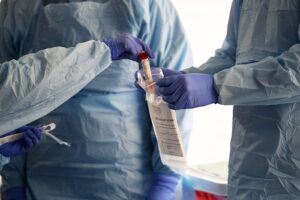How can technology be used for good, in times like these?
Little is yet to be known about COVID-19 because of a lack of widespread available testing and many other factors. Our response to this infectious disease has two phases: containment and  mitigation. Containment happens when initial cases begin to appear. Without the ability to test people who may or may not be infected, we cannot effectively isolate or treat them.
mitigation. Containment happens when initial cases begin to appear. Without the ability to test people who may or may not be infected, we cannot effectively isolate or treat them.
The goal of mitigation measures such as social distancing, canceling large events, closing schools, and telling people to work from home is to help lower the number of infections, or “flatten the curve.” This helps to slow down the infections so that hospitals are not overwhelmed at one time.
There are two crucial technologies for testing: PCR, or polymerase chain reaction, and reverse-transcriptase. Combining these two techniques and this creates the RT-PCR. The RT-PCR is the only way to determine if a person has COVID-19, this means that only lab trained technicians can conduct the test.
It’s important to remember that the tests used for COVID-19 are not one test for one virus, it’s a method for identifying specific genetic sequences used in academic, commercial, and public health labs around the world. If proper protocols are not followed, things can easily go sideways, which in this case is what happened. The kits that came early on, were not up to proper protocol, therefore, leading to missed infectious people in the crucial days of the spread. Other hiccups in the protocol are a lack of supply to run the tests accordingly. What comes next? More testing kits and new testing technologies would help ramp up capacity. With that being said, there are numerous companies working to create other tests that could be more efficient. Currently, tests are being done depending on how sick you feel and largely on where you live, in the meantime, continue to practice social distancing, avoid large gatherings, and work from home (if you can).











